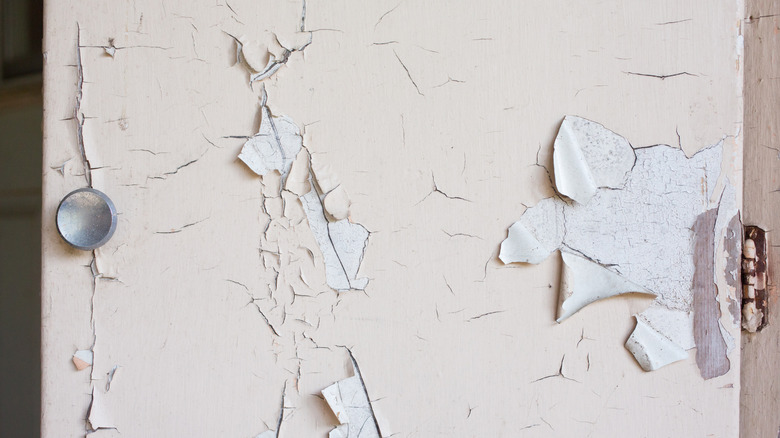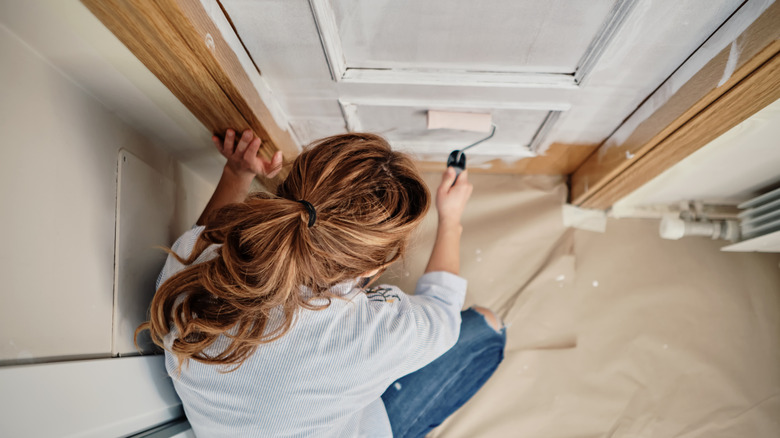Why The Paint Is Rubbing Off Your Door And How To Fix It
The only thing worse than a bad paint job is a great one that doesn't last. And if you've noticed the paint on your door peeling in sheets, you're probably wondering why that's happening. Well, there's a high chance your door was originally painted with oil-based paint and the last paint job was done with water-based paint that was not adequately primed.
Oil- or solvent-based paints were very popular years ago until it was discovered that they contained volatile organic compounds (VOCs) which release toxic vapors that are dangerous to human health and the environment. This prompted the move to safer water-based paints, like latex or acrylic, that have low VOC content. However, a problem arises when you are either renovating your home or touching up old fixtures that might have been painted with these oil paints. Oil and water do not mix so the solvent base in the oil paint forms a barrier that won't let the latex or acrylic paint bond to it. This is what causes the paint to peel or flake off after some time. To avoid this before painting, it's best to carry out a simple test that will help you tell if you're painting over oil or latex paint. Simply dip a cotton ball in rubbing alcohol or acetone nail polish remover and rub it over the paint in an inconspicuous area. If the paint comes off, it's water-based. If not, it's an oil-based paint.
How to fix this problem
The unfortunate truth is that you have to completely peel off the new paint from the door to effectively salvage the situation. After you're done stripping off all the peeling paint, your next step should be to sand the surface of the door with fine sandpaper (180 to 220 grit). Scuffing up the oil paint will make it easier for the new primer and paint to stick to the door's surface. After sanding, clean the door twice with a sponge soaked in a mixture of a ¼ cup of trisodium phosphate (TSP) and a gallon of water. TSP is a potent cleaner and degreaser commonly used during repaintings. Make sure to wear gloves while cleaning with the TSP.
After cleaning comes priming. Primers are necessary to keep the new paint bonded to the door's surface and prevent subsequent peeling. You can use either water-based or oil-based primer as both will work effectively. After the primer is fully dry, you can now go ahead to apply two coats of your desired new paint. Do your best not to forget any parts during your door painting process. Allow the paint to fully dry, and you're done fixing your botched paint job.

